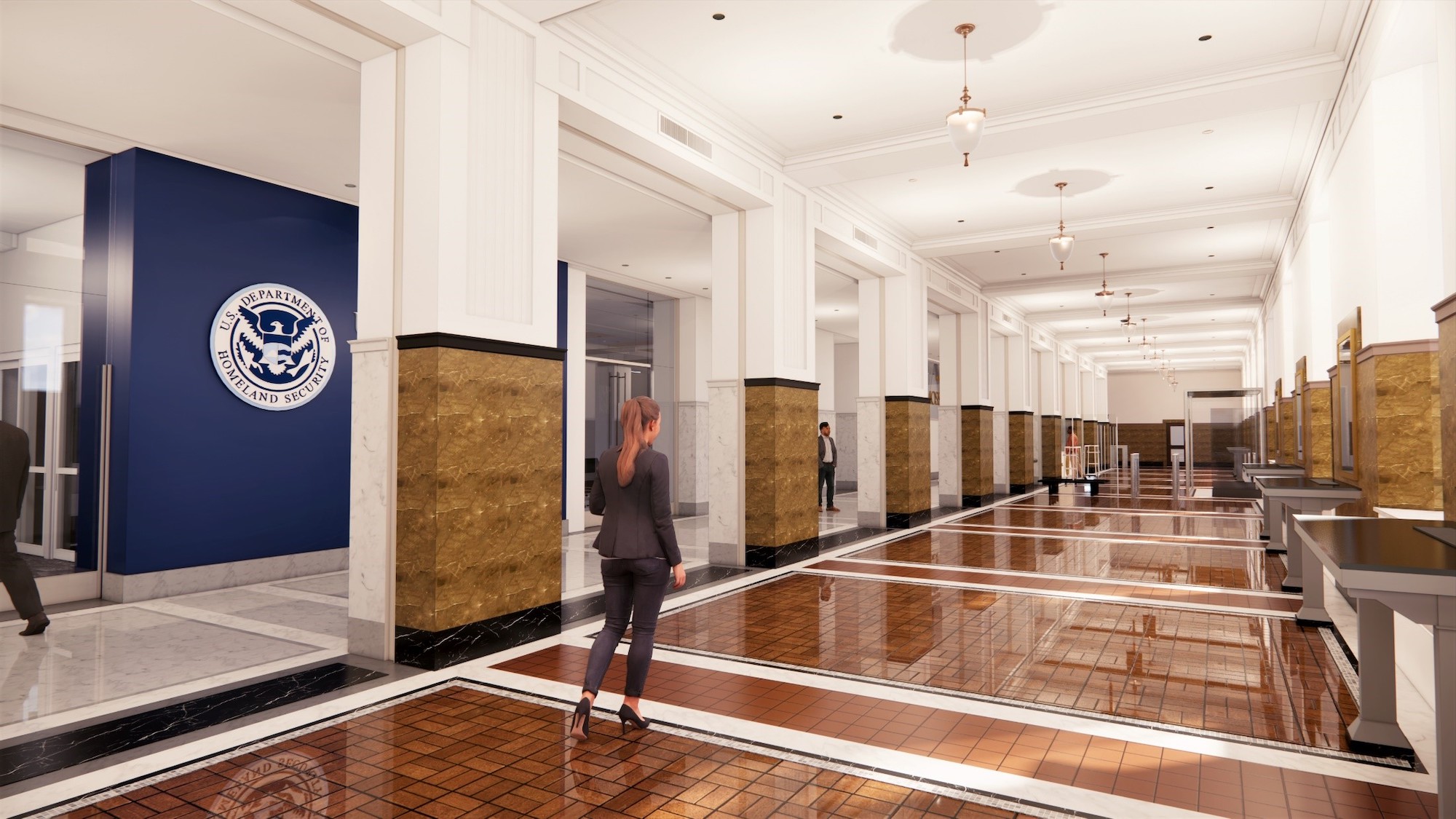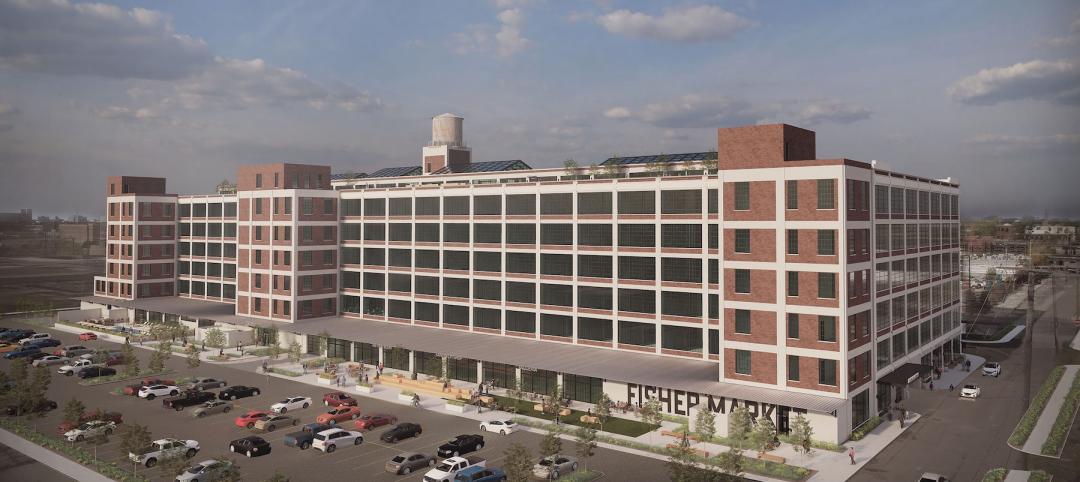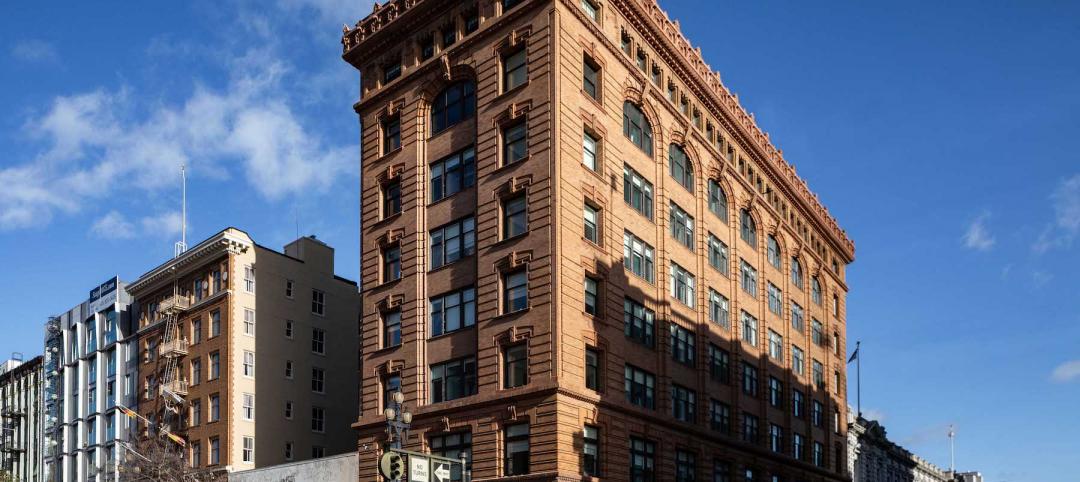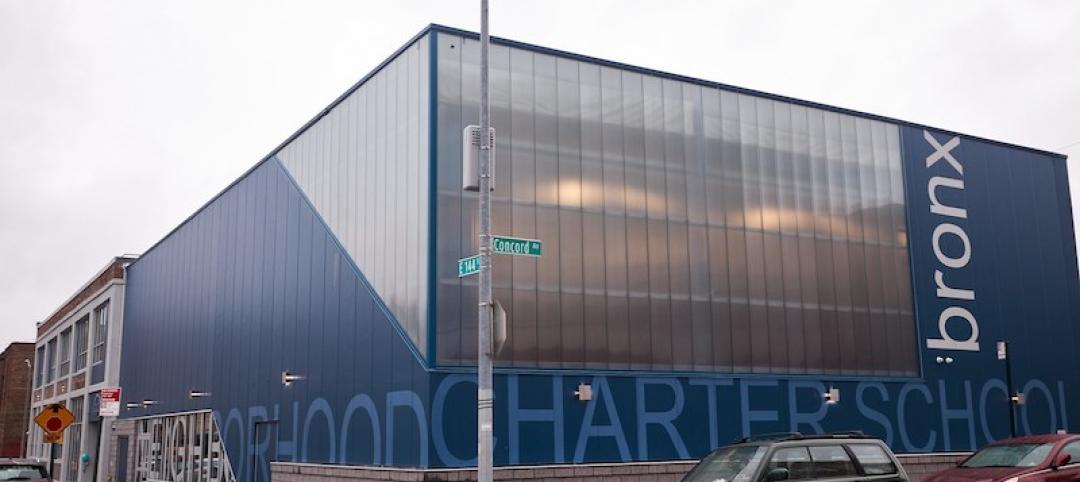In downtown Salt Lake City, the Frank E. Moss U.S. Courthouse is being transformed into a modern workplace for about a dozen federal agencies. By providing offices for agencies previously housed elsewhere, the adaptive reuse project is expected to realize an annual savings for the federal government of up to $6 million in lease costs.
Built in 1905 as a federal courthouse and post office, the building underwent renovations and expansions in 1912 and 1932. By 2020, the building sat largely vacant. Its unreinforced masonry construction and its proximity to the Wasatch Fault made it the most at-risk building in the U.S. General Services Administration’s entire portfolio, according to a statement from HOK.
The design by HOK and Trivers Associates restores the building’s terrazzo, marbled lobbies and corridors, and wood-paneled courtrooms to their original quality. The project team is working both to preserve the building and to create a “building within a building” that meets the latest federal earthquake risk management standards.
The seismic upgrades include reinforced concrete shear walls and thousands of epoxy dowels added to the existing masonry walls, as well as new foundations and steel collector elements below each floor to tie the original building with two additions.
Costing a reported $116 million, the 250,000-sf project also will provide the latest workplace technology and amenities, including breakout rooms, lounges, and cultural galleries. Wellness features include indoor bicycle parking, showers, and lactation and wellbeing rooms on every floor.
The building, which is targeting LEED Gold certification, will use 50% less energy and 30% less water than a similarly sized building, and it will reduce embodied carbon by 59% compared to a new replacement building. A chilled-beam heating/cooling system will reduce airborne particulates, improve efficiency, and lower carbon emissions.
On the Building Team:
Owner: U.S. General Services Administration
Design architect and architect of record: HOK
Historic architect: Trivers Associates
MEP/FP engineer: HOK, Spectrum Engineers, Henderson Engineers
Structural engineer: HOK, SGH, Dunn Associates
Construction: Big D, Jacobs

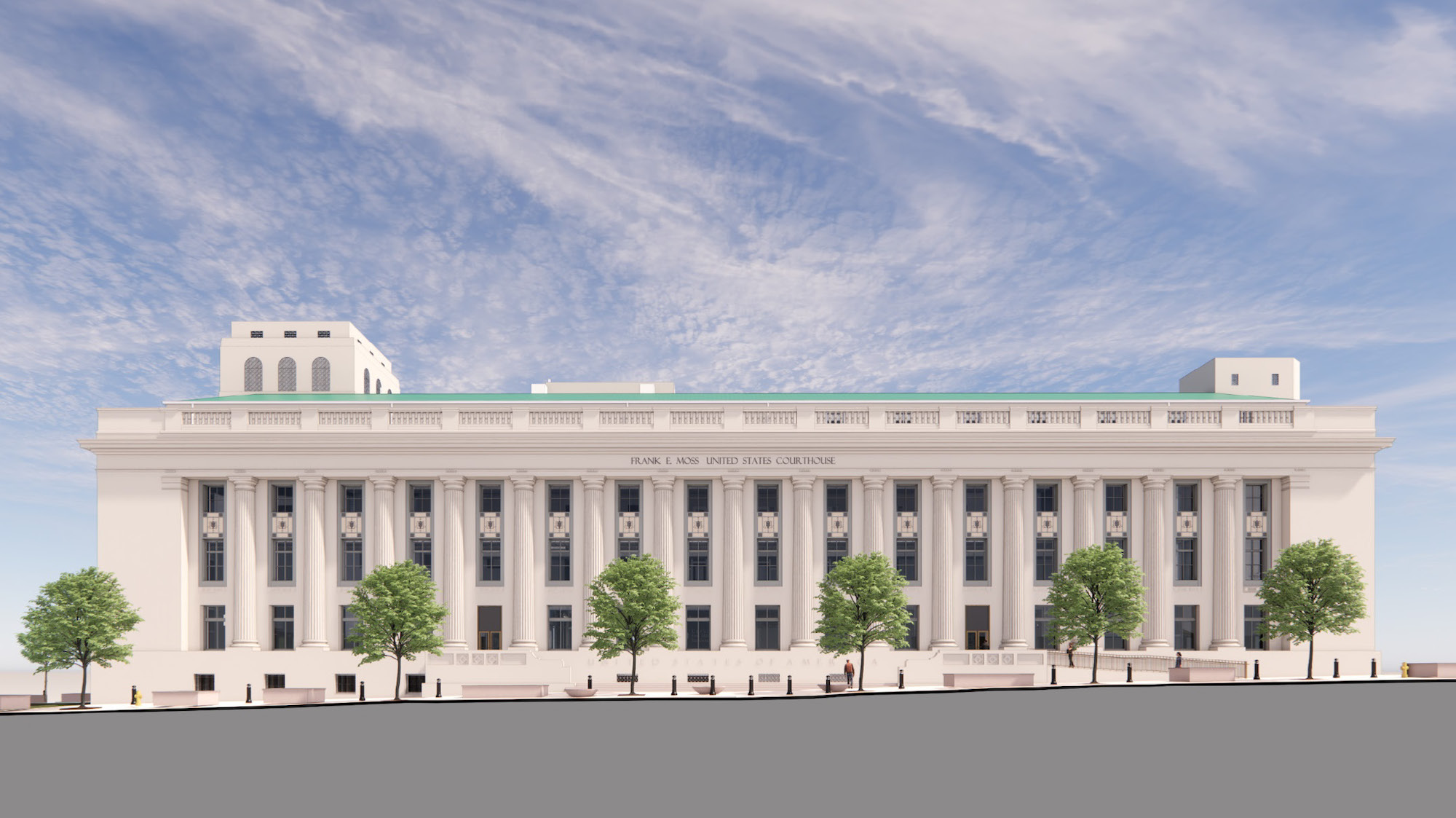
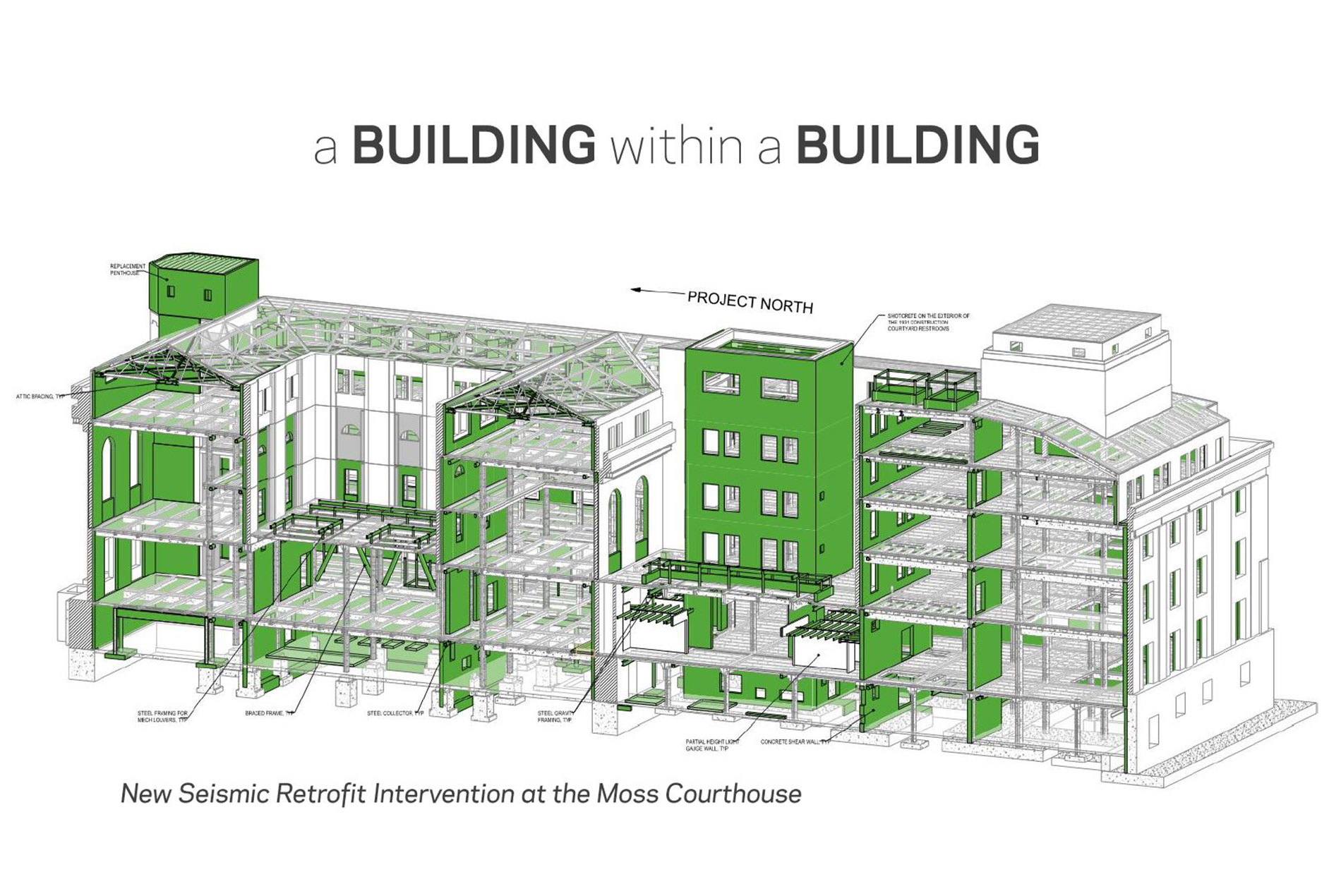
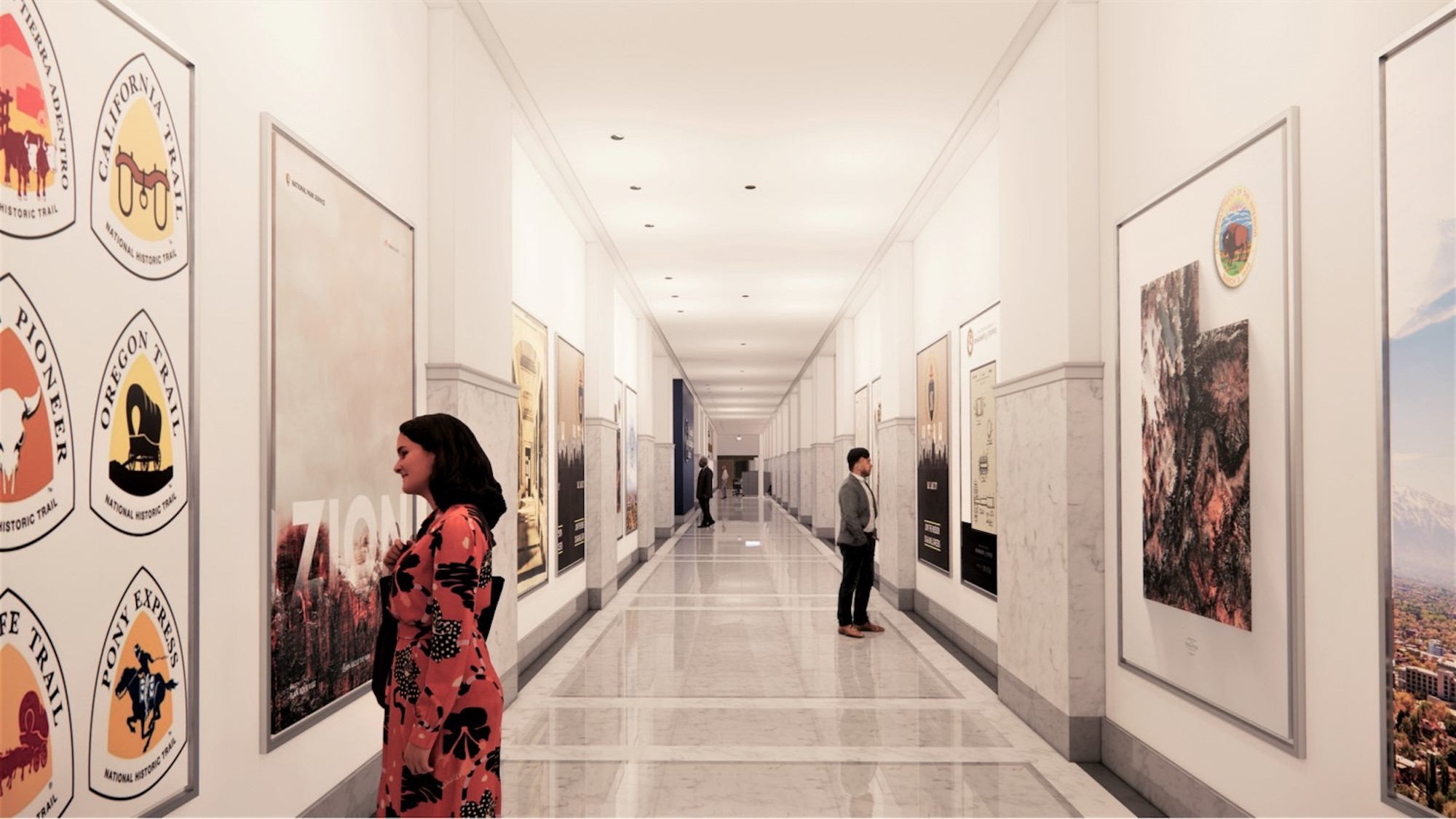
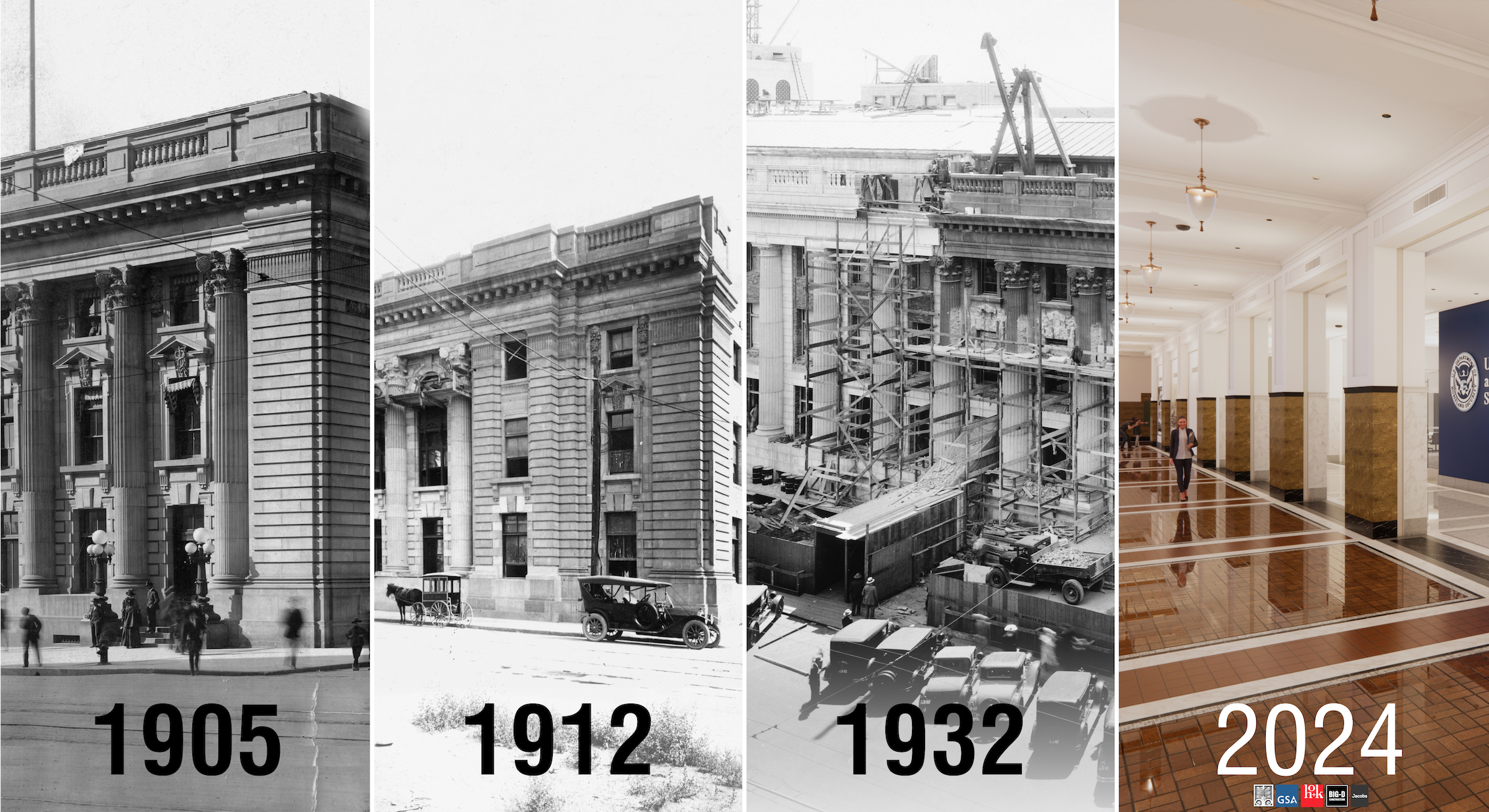
Related Stories
Urban Planning | Jul 19, 2022
The EV charger station market is appealing to investors and developers, large and small
The latest entry, The StackCharge, is designed to make recharging time seem shorter.
Adaptive Reuse | May 18, 2022
An auto plant in Detroit to get a retread as mixed-use housing
Fisher 21 Lofts could be the largest minority-led redevelopment in the city’s history.
Industrial Facilities | Apr 1, 2022
Robust demand strains industrial space supply
JLL’s latest report finds a shift toward much larger buildings nearer urban centers, which fetch higher rents.
Healthcare Facilities | Mar 25, 2022
Health group converts bank building to drive-thru clinic
Edward-Elmhurst Health and JTS Architects had to get creative when turning an American Chartered Bank into a drive-thru clinic for outpatient testing and vaccinations.
Adaptive Reuse | Dec 16, 2021
An adaptive reuse of a historic building in San Francisco was worth the wait
A five-year-long project included extensive restoration.
Adaptive Reuse | Nov 1, 2021
CallisonRTKL explores converting decommissioned cruise ships for housing
The rapid increase in cruise ship decommissioning during the last 18 months has created a unique opportunity to innovate and adapt these large ships.
Multifamily Housing | Oct 21, 2021
Chicago’s historic Lathrop public housing complex gets new life as mixed-income community
A revitalized New Deal–era public housing community in Chicago brings the Garden City movement of yesteryear into the 21st century.
Adaptive Reuse | Aug 25, 2021
The first net-zero hotel in the U.S. is nearing completion in Connecticut
Solar arrays will provide the electricity for the Hotel Marcel, whose name recalls the building’s original designer.
Adaptive Reuse | Aug 13, 2021
Developers are repositioning vacant space as charter schools
Transwestern is working with the National Alliance of Public Charter Schools to provide a turnkey solution.
Hotel Facilities | Jun 18, 2021
Adaptive reuse for hospitality, with Frank Cretella of Landmark Developers
In an exclusive interview for HorizonTV, Landmark Developers' President Frank Cretella talks about the firm's adaptive reuse projects for the hospitality sector. Cretella outlines his company's keys to success in hospitality development, including finding unique properties and creating memorable spaces.


